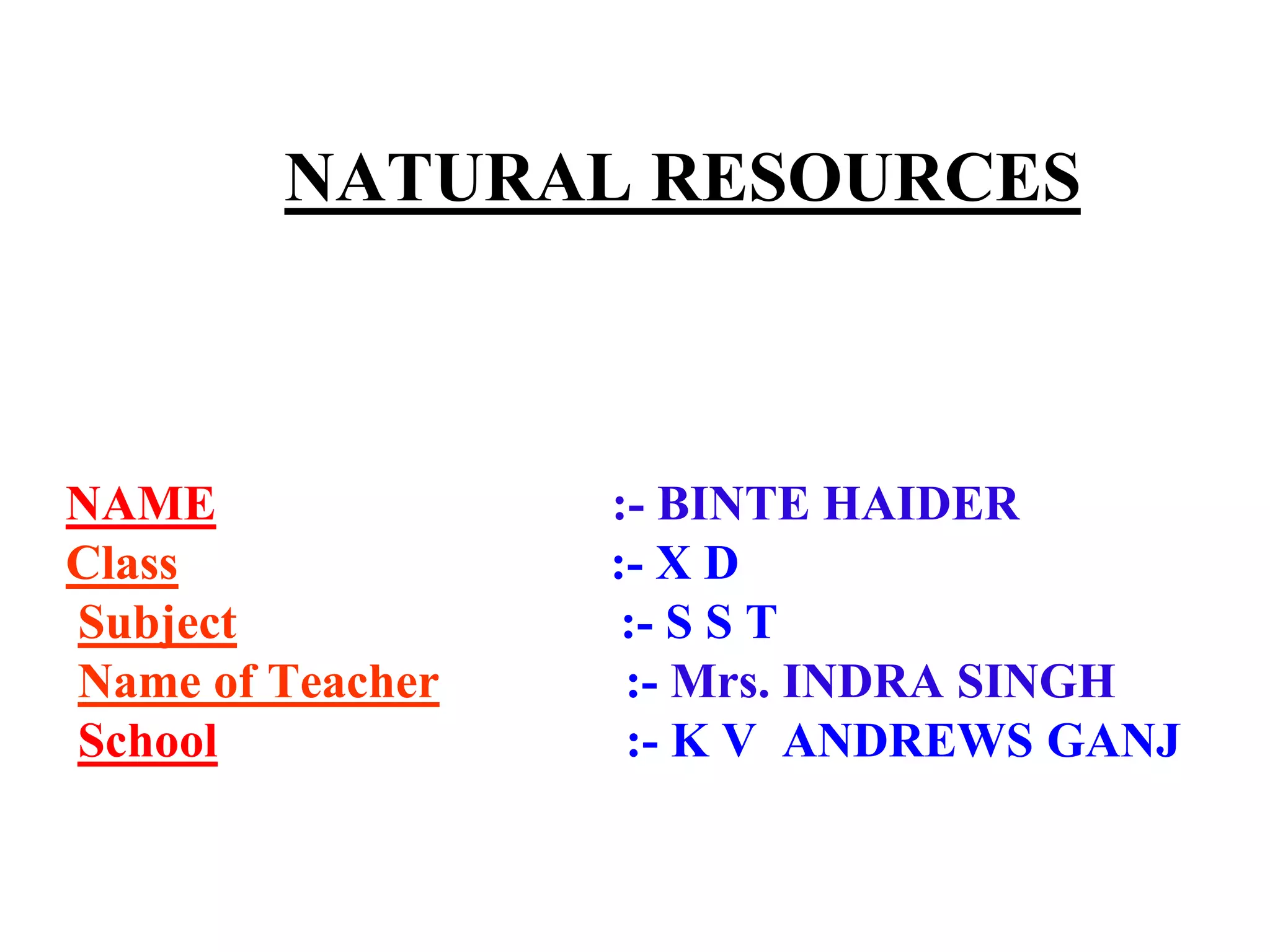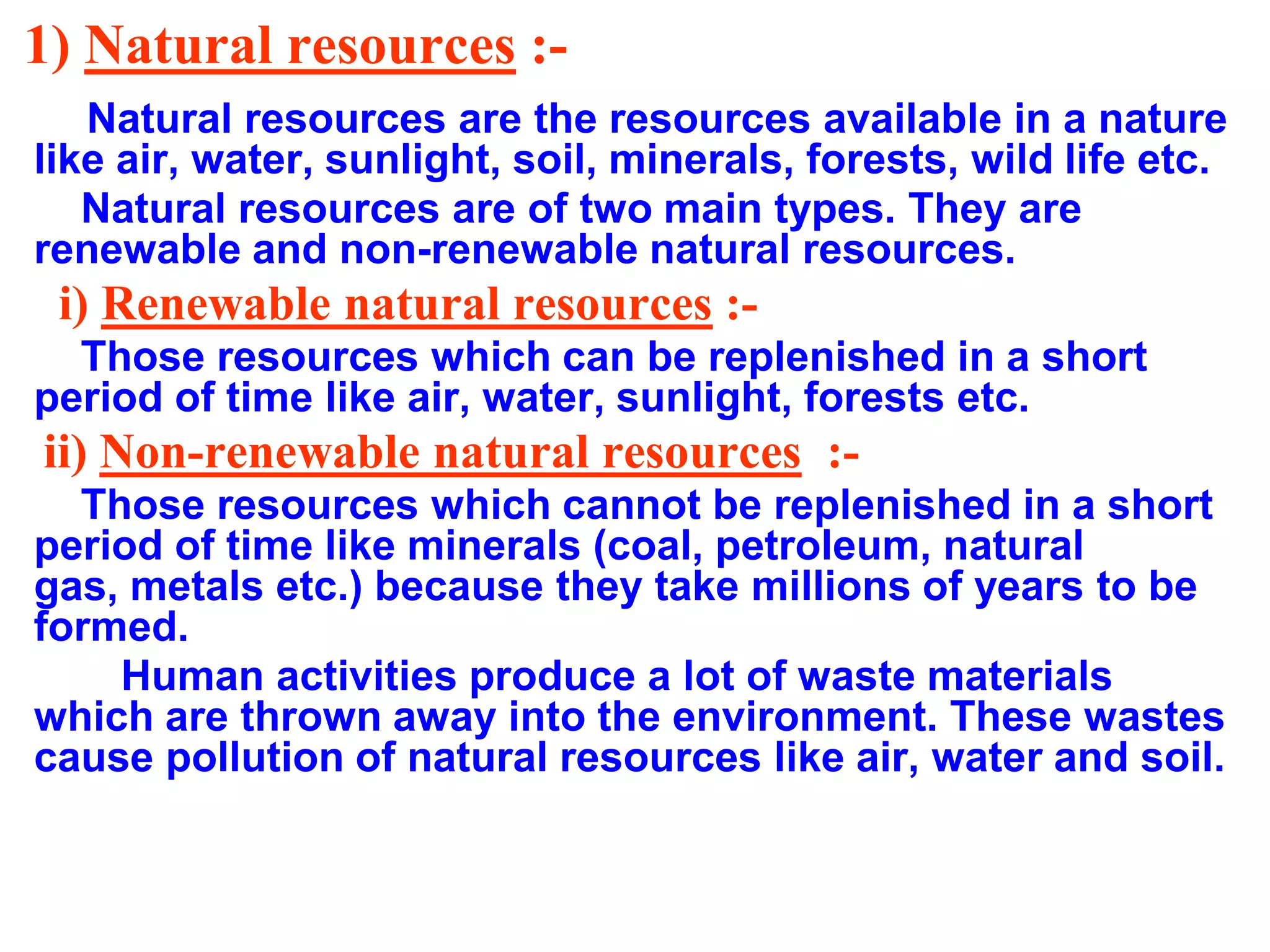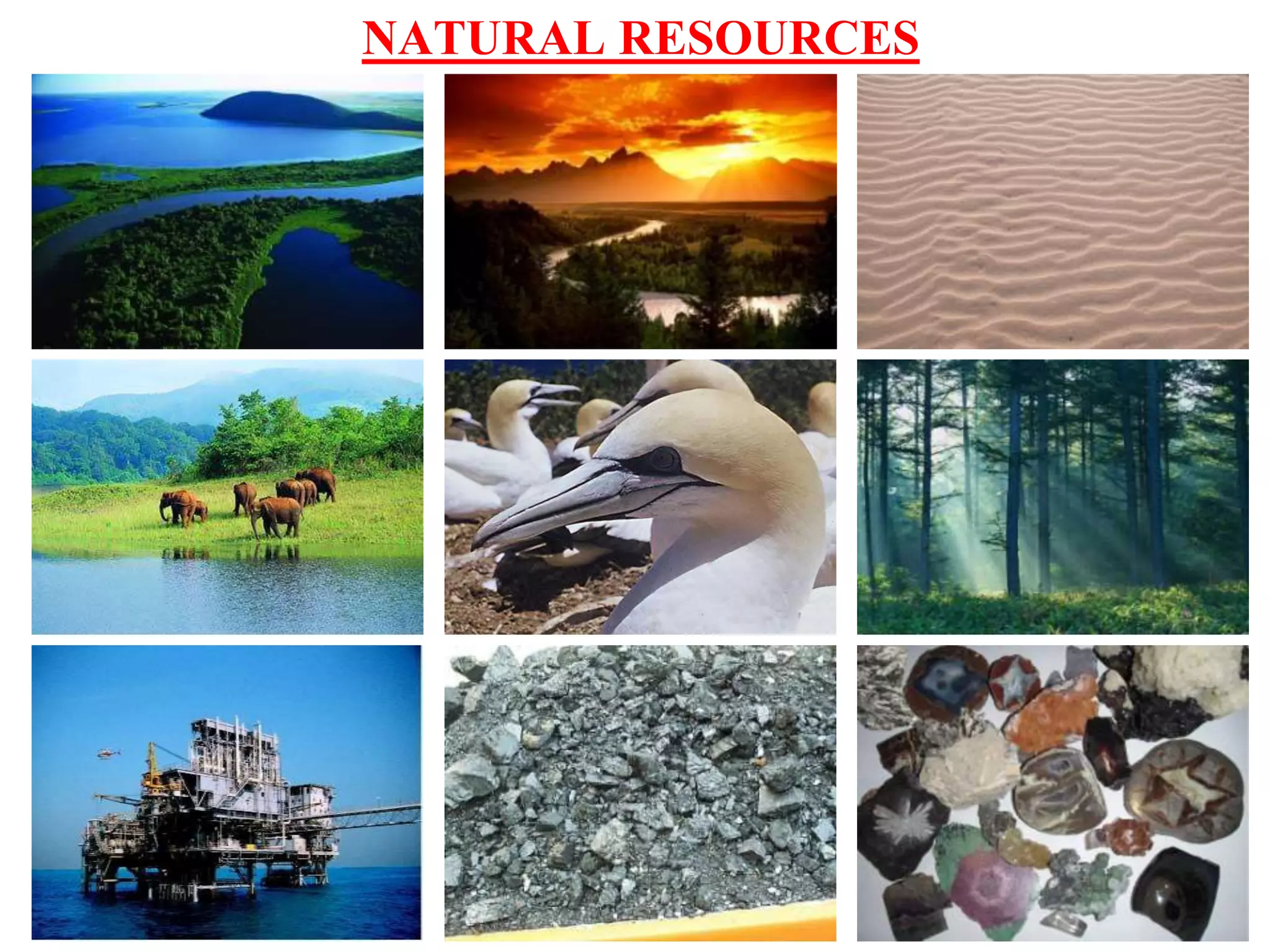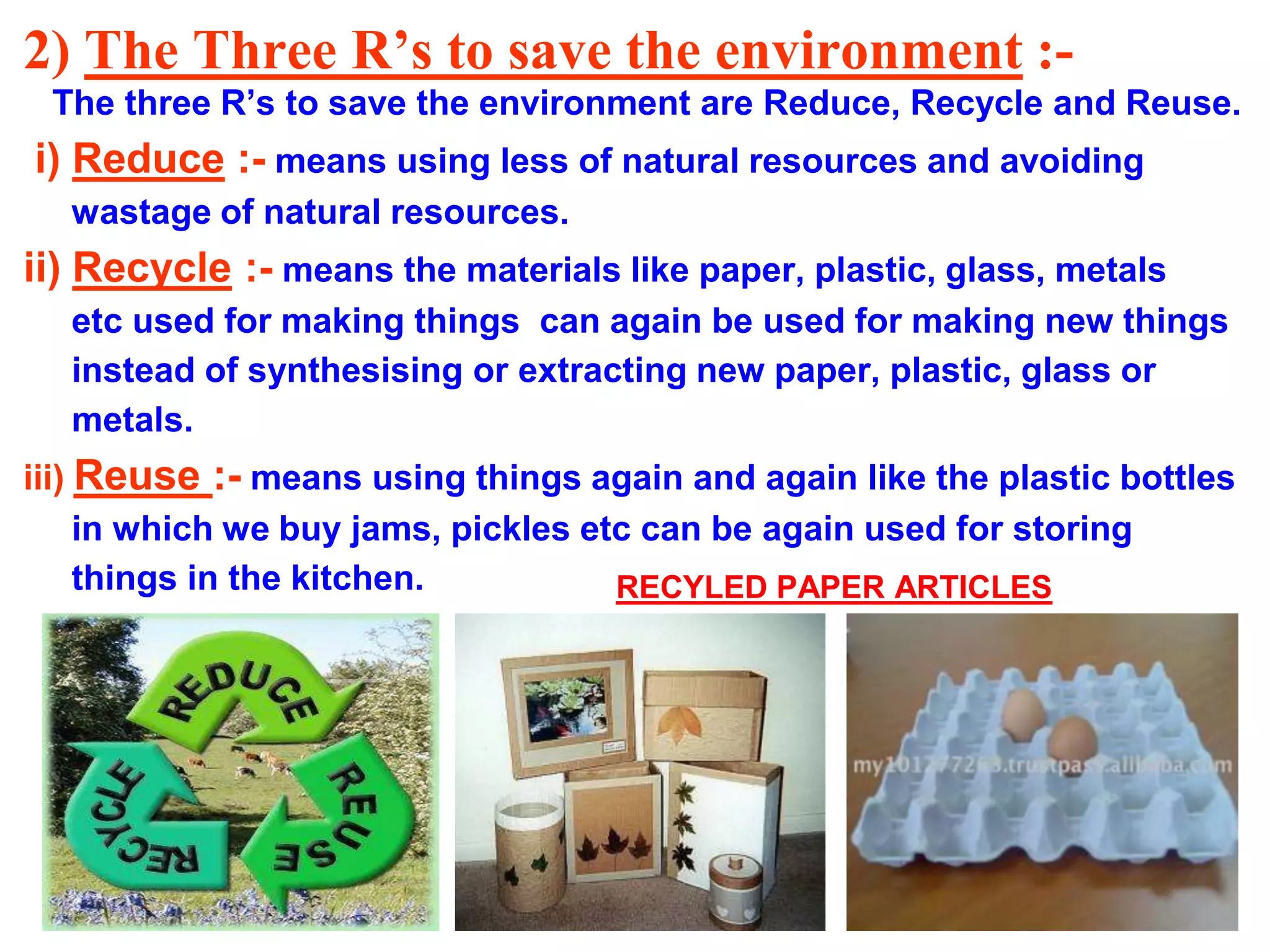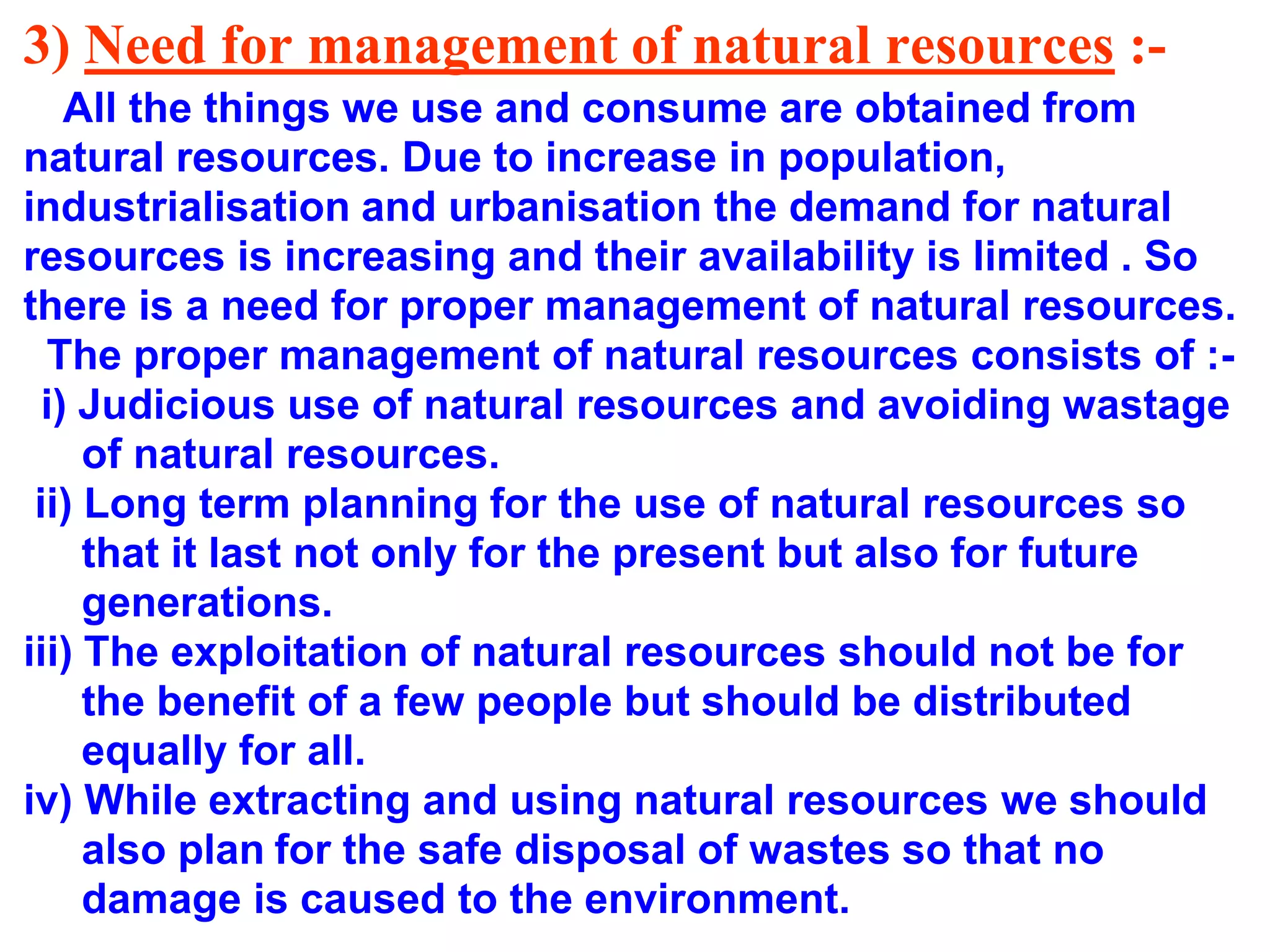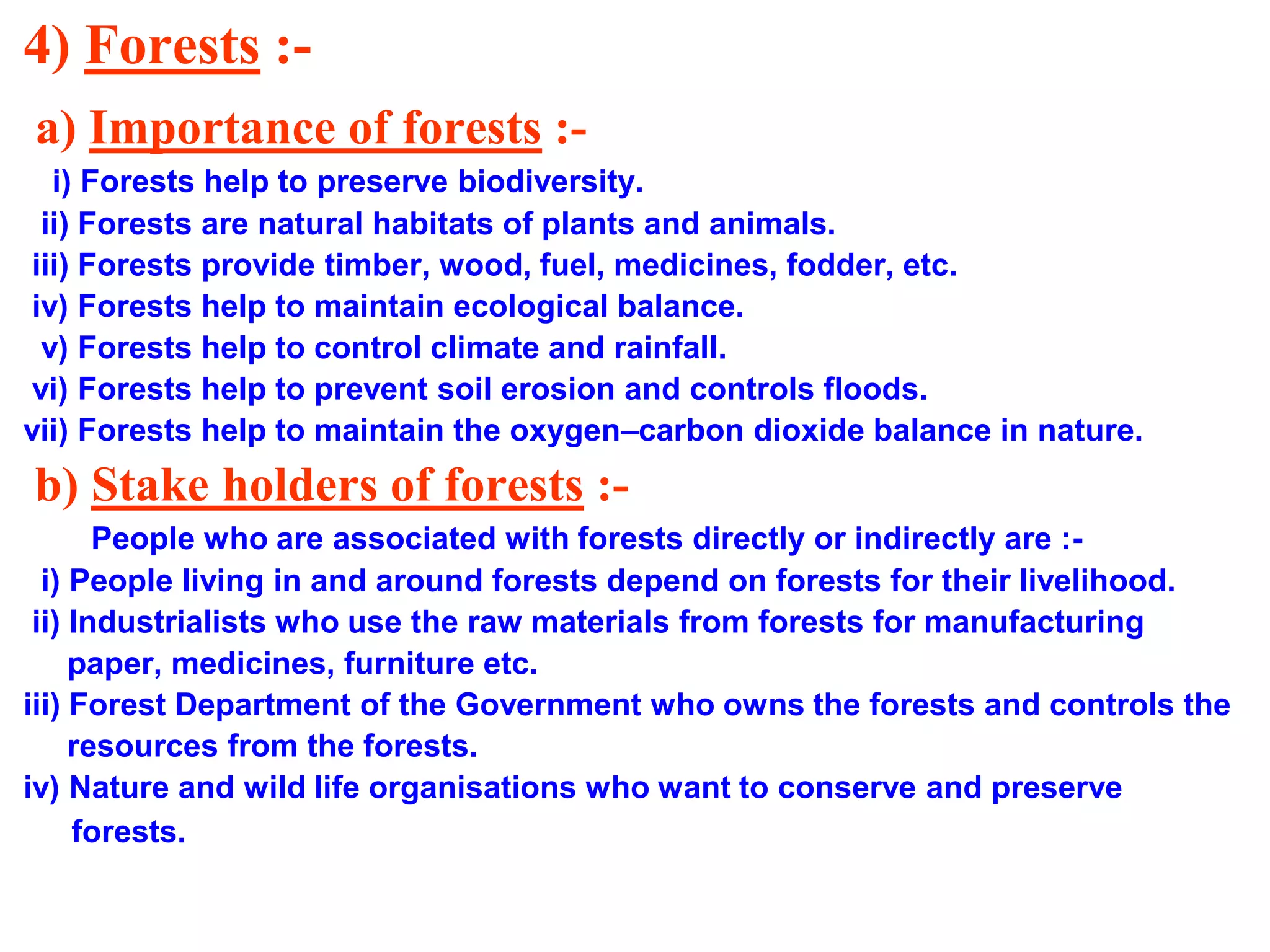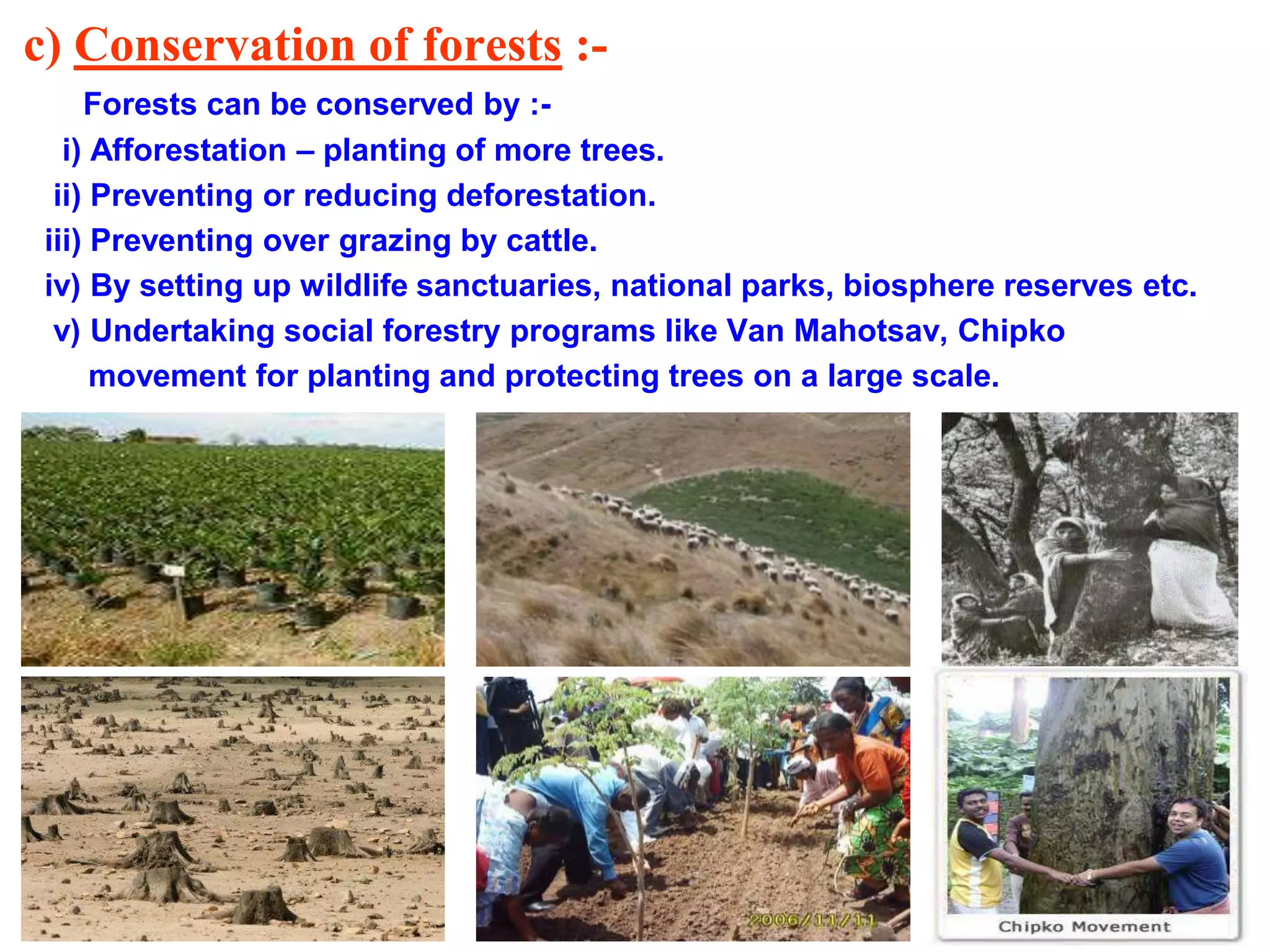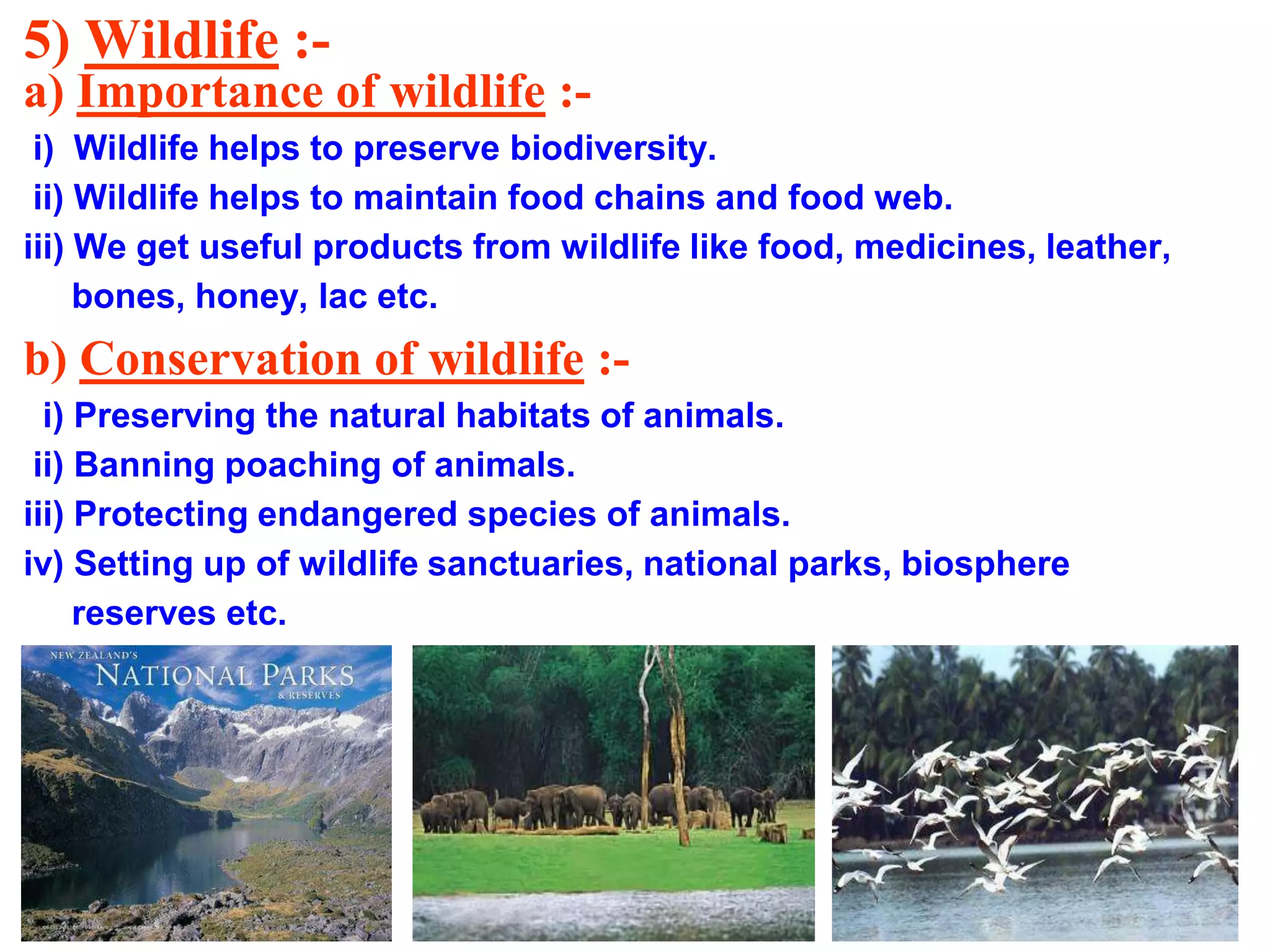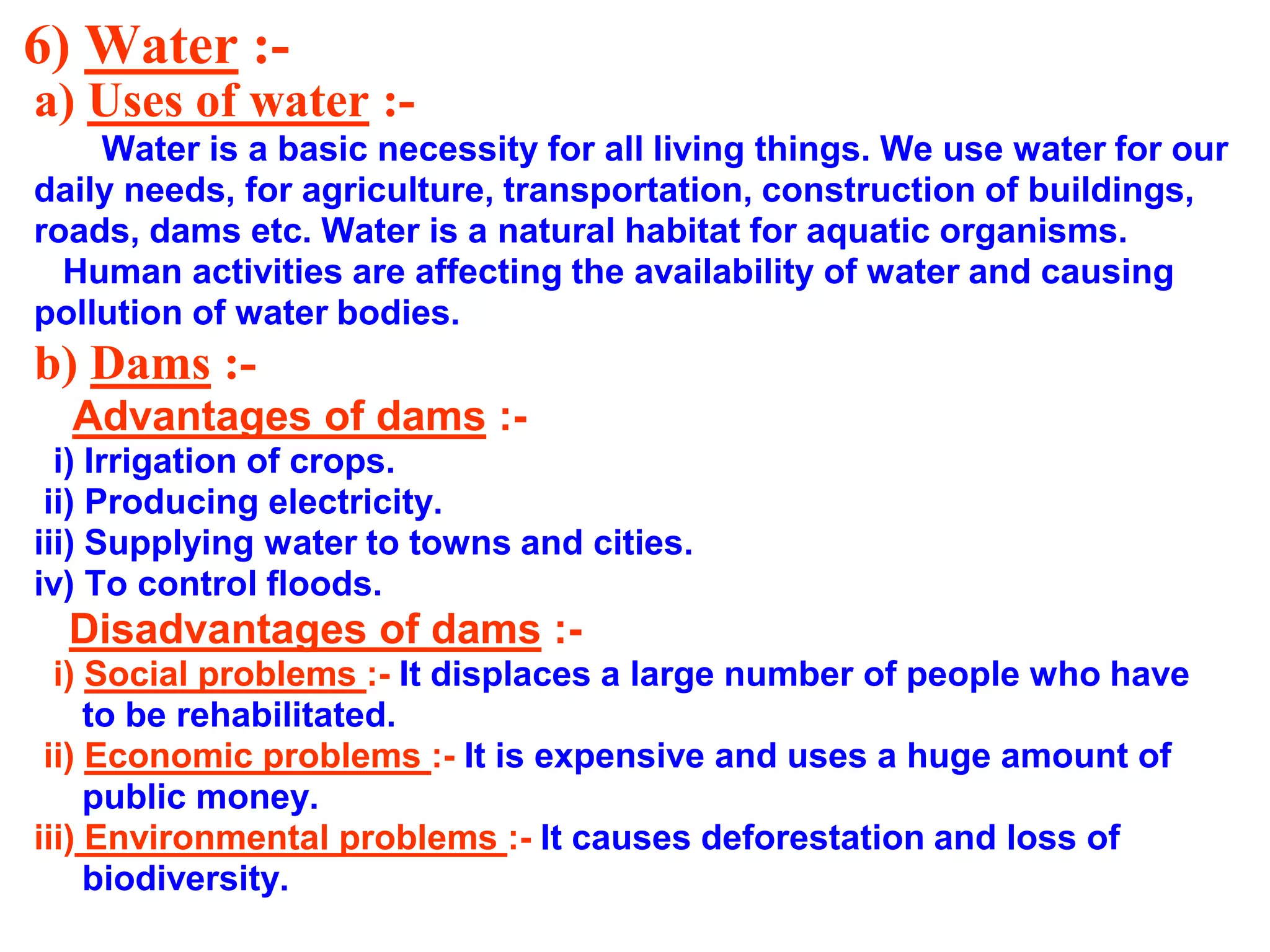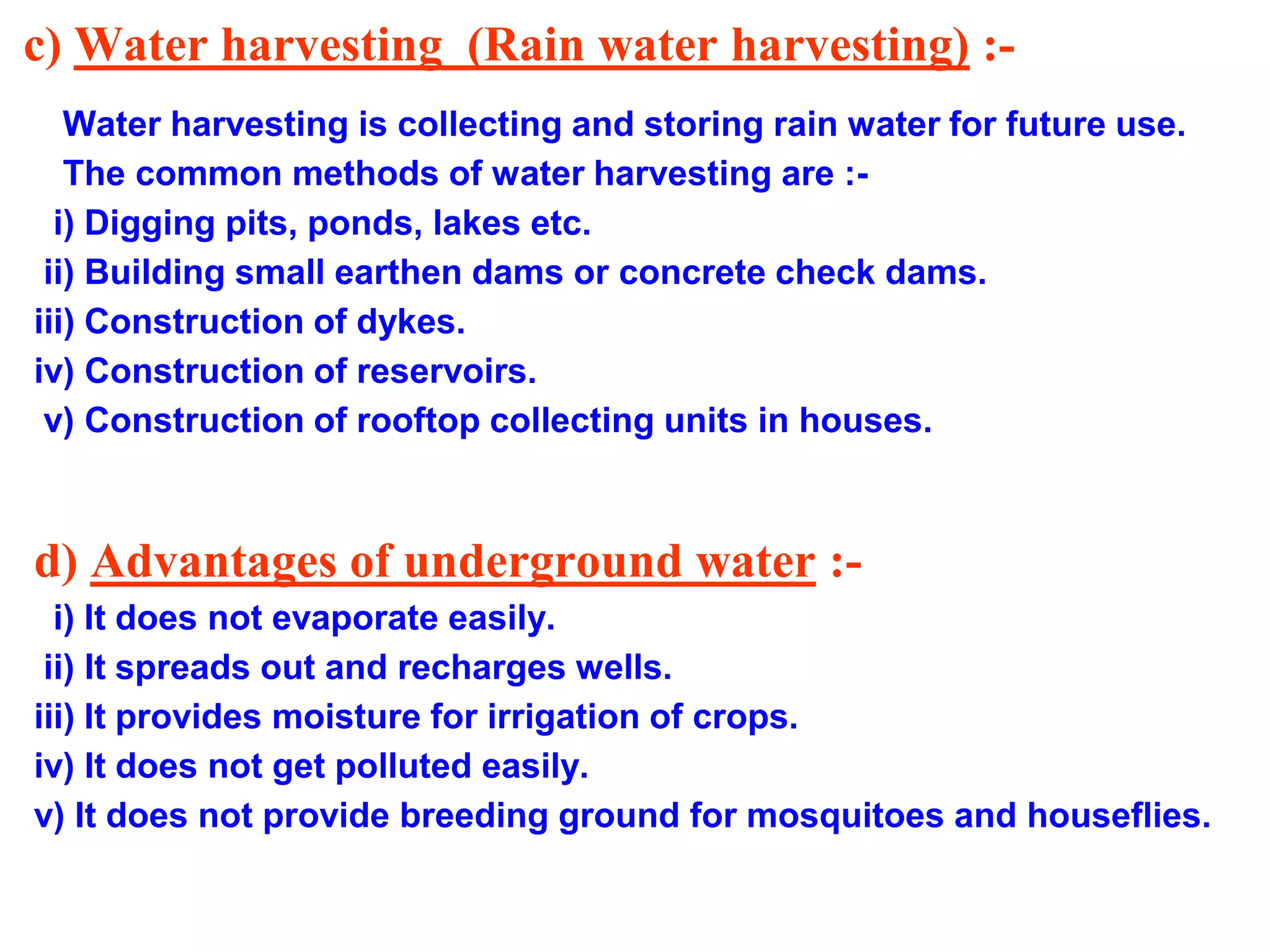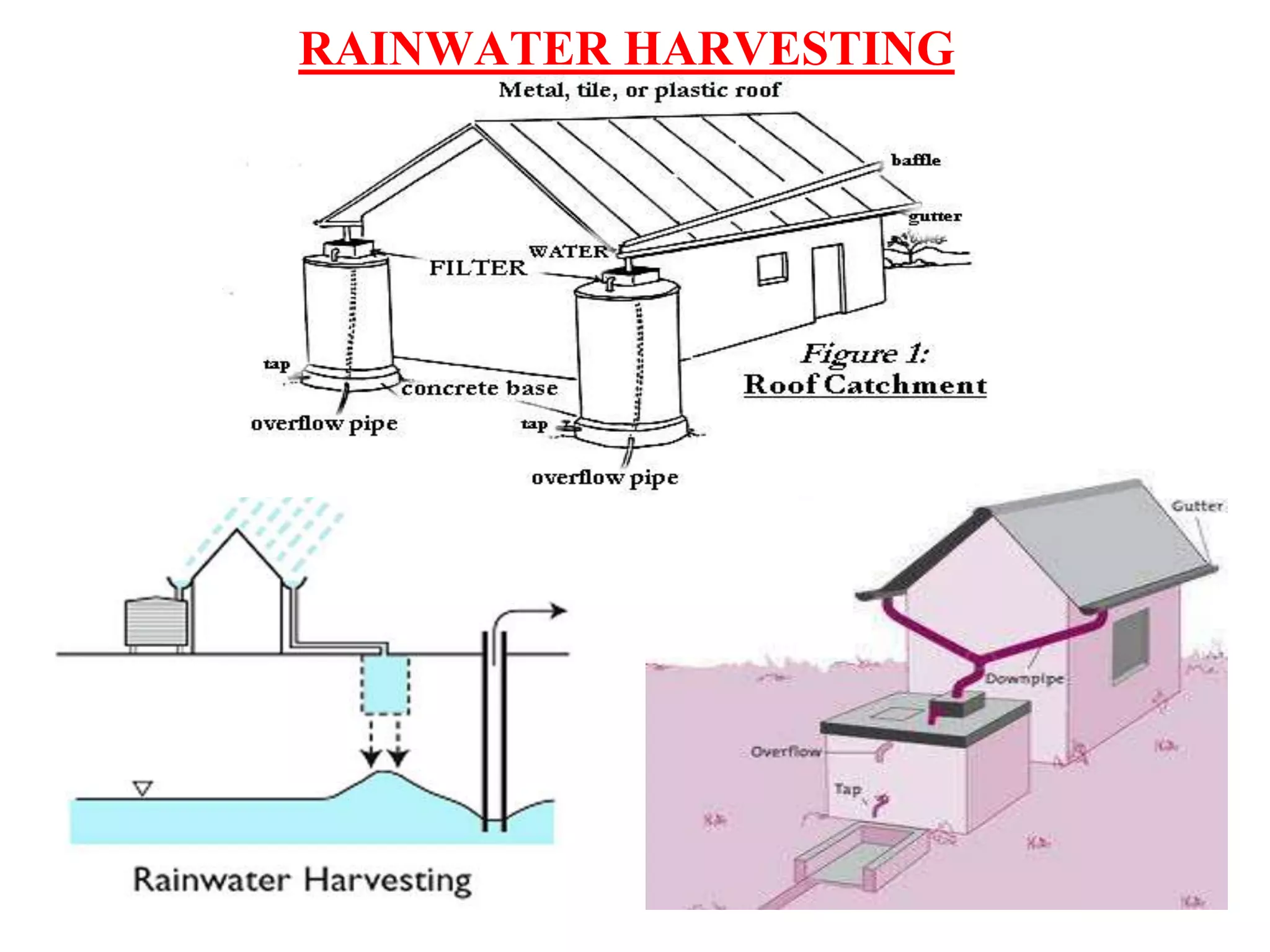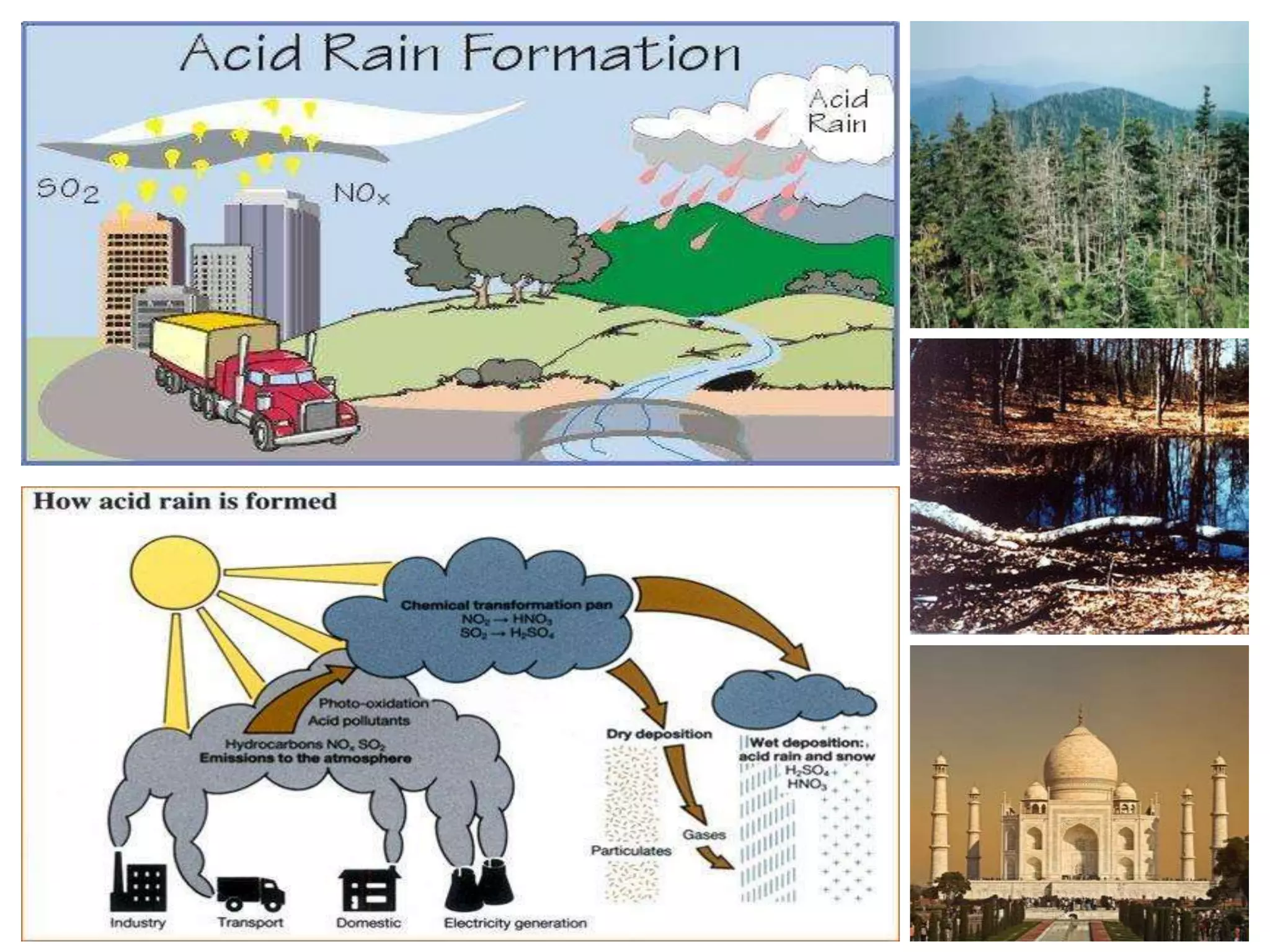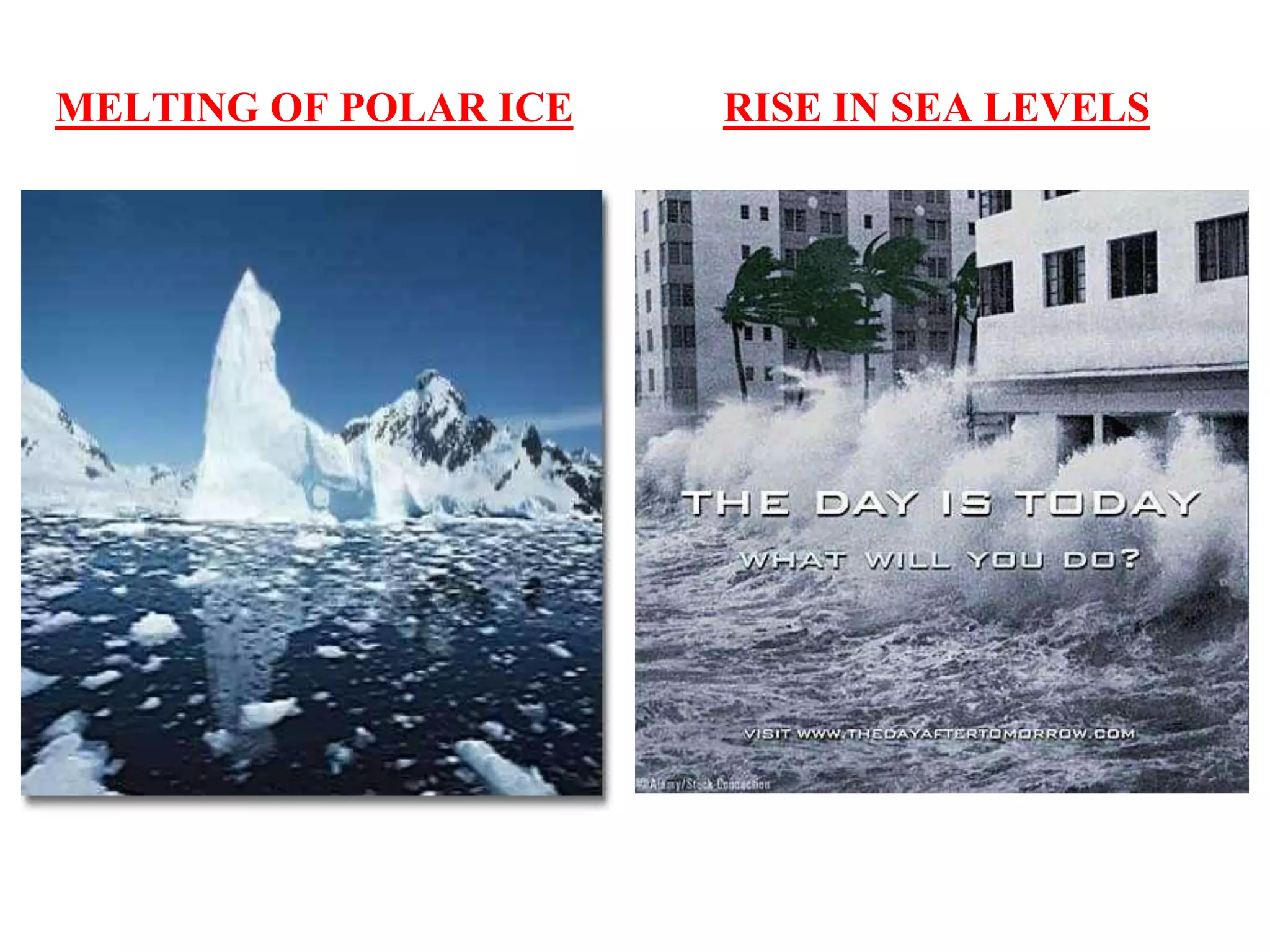This document discusses natural resources and their management. It covers renewable and non-renewable resources, the 3 R's for environmental conservation, and the need for proper management of resources. Specific sections cover forests, wildlife, water resources including dams and water harvesting, and coal and petroleum. The key points are that natural resources require judicious management to avoid overuse and ensure availability for future generations given population and development pressures.
